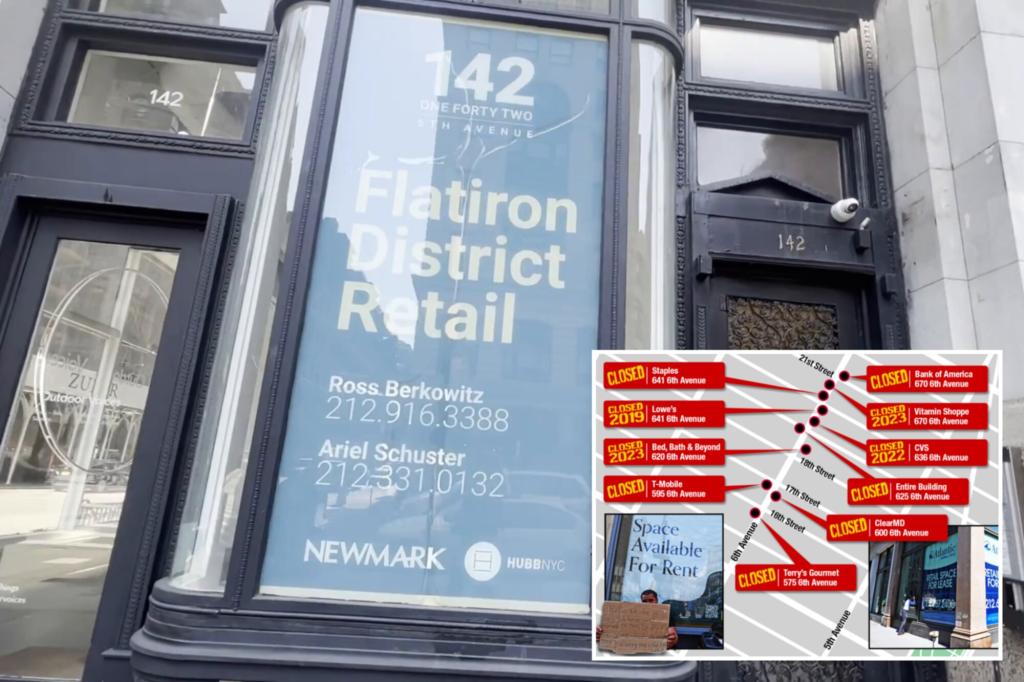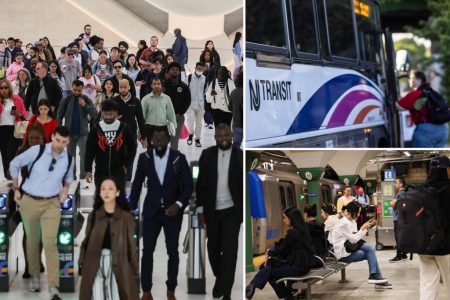The Flatiron District in Manhattan is facing a crisis, with many storefronts standing empty and major retailers abandoning the area. Businesses trying to survive in the district are struggling with rampant shoplifting and theft, causing further financial strain. Inflation and the shift to remote work have also contributed to the challenges facing local businesses. Retail giants like Lowes, Bed Bath & Beyond, and Staples have closed their doors, leaving behind vacant spaces that remain unoccupied. The loss of these anchor stores has had a domino effect, with smaller businesses also struggling to stay afloat.
The decline of the Flatiron District has been attributed to a combination of factors, including the rise of online shopping, pandemic-induced business closures, and the overall decline in quality of life in the area. State Conservative Party Chairman Gerard Kassar described the situation as a “sign of a decaying community,” with the closure of businesses leading to a decline in real estate values. Merchants in the area believe that the rise in online shopping and the impact of the pandemic have made the neighborhood less appealing to both residents and visitors. The decline in the area has also been reflected in rising crime rates, with retail theft and petty larcenies on the rise.
The increase in crime has been a major concern for businesses in the Flatiron District, with theft and shoplifting becoming more common occurrences. Despite the efforts of local business owners and law enforcement, the situation continues to worsen, with instances of theft on the rise. The NYPD 13th Precinct has reported significant increases in retail thefts and petty larcenies in the area, indicating a troubling trend that shows no signs of improvement. Merchants are feeling the impact of these crimes on their businesses, with many expressing concerns about the future viability of the district.
The closure of major retailers like T-Mobile, Staples, CVS, and Vitamin Shoppe has left a noticeable void in the Flatiron District, with numerous storefronts now vacant and available for lease. The loss of these anchor stores has had a ripple effect on the local economy, making it difficult for smaller businesses to attract customers and remain profitable. Business owners and managers in the area are grappling with the challenges posed by rising crime rates, online shopping trends, and the overall decline in foot traffic. The future of the Flatiron District remains uncertain, with many wondering if the once-thriving business district can recover from its current state of decline.
The statistics paint a grim picture of the situation in the Flatiron District, with reports of retail thefts and petty larcenies on the rise. Law enforcement data indicates a significant increase in these crimes, with the numbers continuing to climb year over year. Business owners like Zak Clapham, who manage shops in the district, are concerned about the future of their businesses and the overall health of the local economy. Despite efforts to address the crime wave and attract customers, many fear that the current challenges facing the Flatiron District may be too severe to overcome.
In response to the crisis in the Flatiron District, businesses like Vitamin Shoppe and CVS have cited factors like foot traffic patterns, rent costs, and market dynamics as reasons for their closures in the area. The ongoing challenges facing retailers in the district have forced many to reassess their business models and make difficult decisions about their future in the neighborhood. As the district continues to grapple with rising crime rates, online shopping trends, and declining foot traffic, the future remains uncertain for businesses in the area. Local merchants and residents are left wondering whether the Flatiron District can recover from its current state of decline and once again thrive as a vibrant business hub in Manhattan.















